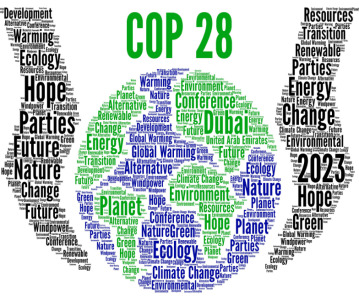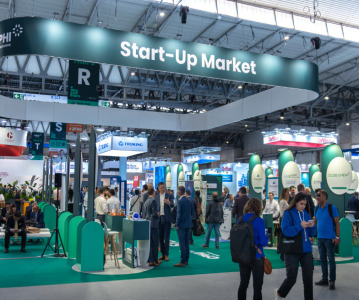How to Commercialise an Advanced Therapy: Connect to Frankfurt on-demand
.png)
In this Connect to Frankfurt session, Andrea Zobel, Senior Director, Personalized Supply Chain at World Courier (Berlin Germany), Melissa Lattanzi, VP Emerging Therapies at AmerisourceBergen (King of Prussia, USA), and Hans-Peter Scherzer, Customer Success Project Manager at World Courier (Tyrol, Austria) come together to discuss the how advanced therapies – namely, cell and gene therapies – require new and robust pharmaceutical logistics when orchestrating their commercialisation and bringing the therapeutic to patients.
As part of our conference track on Future Therapies, learn how partnering with the right third-party logistics partner can streamline the process of developing, manufacturing, and commercialising cell and gene therapy products in a high-stakes environment.
New therapies require new logistics
Since the first allogeneic hematopoietic stem cell transplant in the 1950s, research interest in cell and gene therapies has continued to increase. Breakthroughs in innovation such as CAR T cell therapies and induced pluripotent stem cells (iPSCs) have expanded the field of cell and gene therapies to new potentials.
However, with new therapies comes new challenges in their manufacturing, transport, and administration. Cells, tissues, vectors, and viruses, essential components of various cell and gene therapy products, require specific conditions in order to remain viable for use. Zobel emphasises the temperature requirements for such components, all of which require below-freezing temperatures for long-term stability. At ambient temperatures, cells, tissues, and viral vectors remain viable for only a few days at most. With such storage requirements, Zobel underlines the importance of a connected ecosystem throughout the process of bringing a therapeutic to commercialisation and to the intended patients.
Orchestrating a streamlined process
Zobel hands the session over to Lattanzi to discuss certain considerations to take when implementing a connected ecosystem. Beginning with patient enrolment, Lattanzi goes through each step of a sample orchestration platform. From researching and screening patients to booking and completing apheresis appointments, each step takes into consideration the relevant coordination and communication requirements to ensure streamlined progress. Lattanzi pays particular attention to the transition of information and therapeutic components between different stakeholders, all of which, she indicates, require the services of a reliable courier service.
Throughout the different phases of a therapeutic’s lifecycle, Lattanzi draws attention to the value of considering the transmission and transportation of data, information, and live cultures at each stage. From clinical phases I and II straight through to the commercial stage, Lattanzi reiterates the significance of proper storage facilities and transportation readiness to ensure the supply chain remains uninterrupted when bringing therapeutics to their intended patients.
Zobel also lists three new requirements in pharmaceutical logistics for cell and gene therapies, which include time criticality, chain of custody, and cryogenic logistics. The resulting orchestration logistics thus depend on how components are shipped – fresh or frozen? Zobel establishes different areas of focus when planning cell and gene therapy shipments, including sample donations, vector transportation, therapy manufacturing, and patient monitoring, each requiring their own supply chain logistics. Getting ahead of these requirements and providing a network of appropriate facilities, most notably cryopreservation facilities, will ensure the delivery of an increasing number of cell and gene therapeutics to those who need them.
A complex process
While circular graphs may show the orchestration of supply chain logistics in a clear-cut manner, the execution of the process is much more complex. Scherzer provides a first-hand account of how complex process of bringing cell and gene therapies to patients can be. Challenges he has faced include the onboarding process of a DV10 shipper, which in one instance arrived damage to the site. While healthcare providers expected a high-quality container provided by a partner that promises the delivery of therapeutics in perfect and viable conditions, it provided a chance for Scherzer and his team to think outside the box in coordinating and delivering solutions for a scenario that had not been considered. Each situation Scherzer describes all go back to the importance of having robust operational logistics and communication to prepare for unexpected challenges. Expect the unexpected!
Likewise, Lattanzi discusses the challenges of therapeutic distribution, especially to those in hard-to-reach areas. She emphasises a two-fold approach towards distribution: physical product distribution (i.e. getting the product to patients) and ensuring that payment can be provided for the product. Thinking about a product’s value proposition, a pricing strategy, and considering a product’s affordability are challenges that providers should keep in mind when bringing cell and gene therapies to the commercial stage.
Zobel closes out with an overview of logistic solutions that can be provided by third-party partners such as AmerisourceBergen and World Courier, where certain practices can be standardised and others adjusted to meet the needs of their customers and therapeutics.
Related News
-
News Pharmapack Awards 2024 Patient-Centric Design Award Winner – Dr Ferrer BioPharma
The 2024 Pharmapack Awards celebrated the best in innovation and design for the pharmaceutical packaging and drug delivery industry on January 24, 2024. -
News Women in Pharma: Minding the Gap at Pharmapack 2024
2024 marks the first year Pharmapack will host a Diversity track dedicated to bridging the gap within the pharmaceutical packaging and drug delivery sector. The track includes a panel discussion on 'Enabling Diversity in the Workplace,' focused... -
News Pharmapack Awards 2024 - Celebrating Packaging and Drug Delivery Innovation
The 2024 Pharmapack Innovation Awards ceremony celebrated the best in pharmaceutical packaging and drug delivery innovation at all levels. The awards were held on January 24, 2024 at the Paris Expo Porte de Versailles. -
News Pharmapack 2024 - From the Floor
Paris once again welcomes Europe’s leading trade show in pharmaceutical packaging and drug delivery innovation. Join our content team as Pharmapack 2024 opens its doors to leading experts and innovators in pharmaceutical packaging and drug delive... -
News CPHI Barcelona 2023: Partnering for Success – Managing Outsourcing Relationships to Optimise Manufacturing Operations
During CPHI Barcelona 2023, insightful content sessions offered attendees the chance to explore trending topics with expert speakers and panellists. Here, we summarise what the pharma industry and supply chain are talking about the most. -
News CPHI Barcelona 2023: Loading Potential – Artificial Intelligence for Pharma Manufacturing
During CPHI Barcelona 2023, insightful content sessions offered attendees the chance to explore trending topics with expert speakers and panellists. Here, we summarise what the pharma industry and supply chain are talking about the most. -
News Pharmaceutical industry supports COP28 health stance in joint statement
As COP28 takes place over this week in Dubai, UAE, several bodies in the pharmaceutical and health industries have come together to announce support of key movements in sustainability in the sector, and to recognise sustainability as a health issue.&nb... -
News CPHI Podcast Series: Start-ups take centre stage at CPHI Barcelona
The first episode of the CPHI Podcast Series since we attended CPHI Barcelona in October covers the Start-up market at the event, with expert Matthew Wise joining Editor Lucy Chard to discuss the event.
Position your company at the heart of the global Pharma industry with a CPHI Online membership
-
Your products and solutions visible to thousands of visitors within the largest Pharma marketplace
-
Generate high-quality, engaged leads for your business, all year round
-
Promote your business as the industry’s thought-leader by hosting your reports, brochures and videos within your profile
-
Your company’s profile boosted at all participating CPHI events
-
An easy-to-use platform with a detailed dashboard showing your leads and performance






.png)

